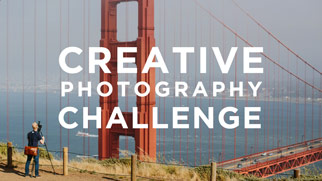More than a few aspiring photographers and hobbyist shooters that caught my earlier (very hardcore) post outlining back-up strategies for professional photography, videography, or design studios, have asked me to advise on a more basic solution for backing up their images. Since there are numerous ways to accomplish the goal of backing up your work, I think it’s best if I focus the discussion to the THEORY of backing up, and let each individual adapt the theory to a PRACTICE that works for you. That said, you’ll be happy to know that the theory is quite simple. And if you want more info, see the earlier post. Here goes:
The theory behind backing up your work is five-fold.
1. Make your work ORGANIZED. You should be able to easily navigate, save, and locate files an organized folder structure. For starters, I recommend what’s commonly called reverse-date naming, combined with some convenient, recognizable text. For example, if I shot images of our family reunion today, December 28, 2006, I would download the images in a folder I’d name 20061228_FamilyReunion. The crucial part of the convention is the number at the front of the title where the year precedes the month, which precedes the date. Naming in this manner will ensure that each folder you shoot will line up in the default setting of most operating systems with the most recent folder atop the list, and others following according to date shot. From this convention, the detailed content of each folder is up to you. If you don’t shoot a lot, then perhaps just put all the day’s files in that folder without additional structure. If you shoot more than one or two memory cards per day, consider further segmenting the reverse-date folder with sub-folders titled Card 1, and Card 2, or similar. AVOID folder names like NEW PICTURES, or YESTERDAY’S PARTY. Lastly, it’s beyond the scope of this post, however if you want to someday find specific images by text searching some day in the future, I recommend using a photo-specific software like Abobe Bridge, Apple Aperature, Photo Mechanic, or iView Media and renaming each file using built in automated functions according to these reverse-date principles.
2. Choose the right STORAGE MEDIUM. Use portable, external hard drives; do not use DVDs or CDs. Lacie makes nice, affordable drives in a variety of sizes. Purchase more storage than you think you’ll need, and note that relatively speaking, when buying storage, you’re purchasing according to economies of scale. Thus, 100GB Hard drive costs $100, or $1.00/GB; whereas 250GB hard drive costs $150, or $0.60/GB. (Note: I recommend that once you identify the ideal-sized hard drive, you purchase TWO of them. Why? See #4 below.)
3. Keep a CLEAN COPY OF THE ORIGINAL DATA. Before uploading your images into some proprietary viewing software like Apple iPhoto, or whatever you might chose, I recommend copying the original data from the camera or memory card directly onto an external hard drive and name the folder according to the convention above. To do this you may want to disable any ‘auto-image-upload’ functions enabled on the proprietary software or operating system. Keep your computer’s hard drive out of the equation. Upload or copy images onto your computer’s hard drive and into your preferred viewing or editing software only AFTER you have a clean copy saved on the external drive.
4. Make it REDUNDANT. In order for your backup protocol to be effective, it’s absolutely crucial that your files be in at least two different locations as soon after creating the images as possible. I suggest using a second external hard drive and making a copy ONLY OF THE CLEAN ORIGINAL DATA either a)every time you download your camera/media card, or b)on some regular interval that you can live with… try putting reminders in your electronic calendar and stick to them! Creating two copies of the original data (and keeping any viewing/editing software out of the equation) is the most important step in backing up data. Hard drives DO FAIL. Don’t subject yourself to having only one copy of your precious photos. It’s not worth it.
5. Keep ’em SEPARATE. Remember why you keep originals of your will in the bank’s safe-deposit box and copies at home? This is a similar concept. Now that you’ve got two separate hard drives with the exact same data on them, do your best to keep them separated. Try keeping one at home and one at the office. Or what at your house and one at your moms. This is the most far-reaching component of the backup protocol and protects you from the more extreme events like theft or fire. Statistically, it’s unlikely that this will happen, however it’s the best way to truly protect yourself from catastrophic loss.
Lastly, be diligent! A backup strategy is only effective if you can maintain it. Even if you’re not an established pro photographer, keeping extra copies of your files according to a well organized, established protocol will help keep your precious files safe for the long haul.




















tarjeta plastico
It looks like pleasant article, nevertheless it just 1 side from the medal. Wonderful reading anyhow, I often appreciated great brain teaser and solid amount of awesome information.
Great website. Lots of helpful information here. I am sending it to some buddies ans also sharing in delicious. And naturally, thanks to your effort!
Alternatively, if you wish to make a visa in a very short notice, you can avail the rush Vietnam visa service.
When you go on her journey and you see how it wraps around the entire
neighborhood, you see that basically her journey is the neighborhood’s journey.
Asian travelers from Thailand, Philippines, Malaysia,
Kingdom of Brunei Darussalam and Indonesia are exempted for a total
of 30 days.